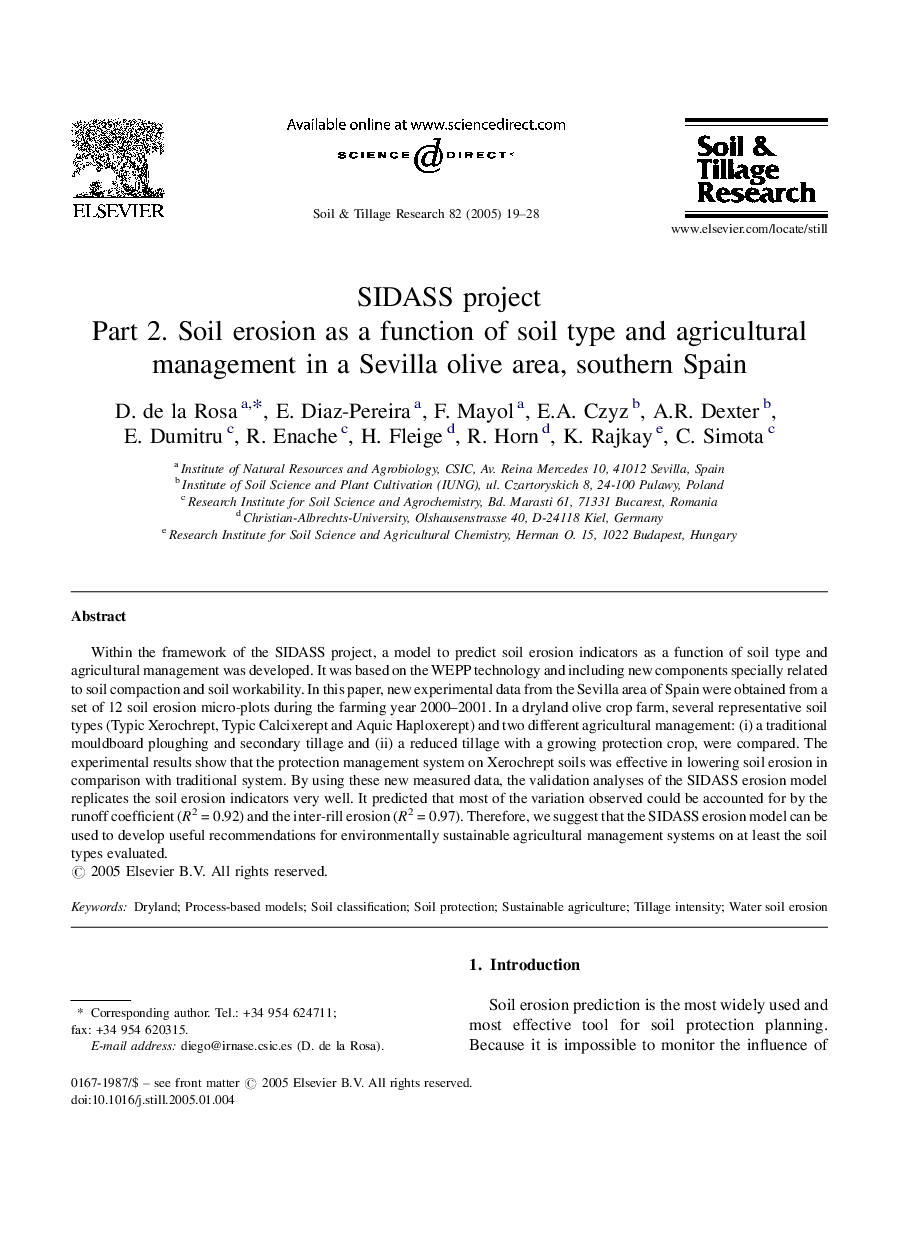| Article ID | Journal | Published Year | Pages | File Type |
|---|---|---|---|---|
| 10295393 | Soil and Tillage Research | 2005 | 10 Pages |
Abstract
Within the framework of the SIDASS project, a model to predict soil erosion indicators as a function of soil type and agricultural management was developed. It was based on the WEPP technology and including new components specially related to soil compaction and soil workability. In this paper, new experimental data from the Sevilla area of Spain were obtained from a set of 12 soil erosion micro-plots during the farming year 2000-2001. In a dryland olive crop farm, several representative soil types (Typic Xerochrept, Typic Calcixerept and Aquic Haploxerept) and two different agricultural management: (i) a traditional mouldboard ploughing and secondary tillage and (ii) a reduced tillage with a growing protection crop, were compared. The experimental results show that the protection management system on Xerochrept soils was effective in lowering soil erosion in comparison with traditional system. By using these new measured data, the validation analyses of the SIDASS erosion model replicates the soil erosion indicators very well. It predicted that most of the variation observed could be accounted for by the runoff coefficient (R2Â =Â 0.92) and the inter-rill erosion (R2Â =Â 0.97). Therefore, we suggest that the SIDASS erosion model can be used to develop useful recommendations for environmentally sustainable agricultural management systems on at least the soil types evaluated.
Keywords
Related Topics
Physical Sciences and Engineering
Energy
Renewable Energy, Sustainability and the Environment
Authors
D. de la Rosa, E. Diaz-Pereira, F. Mayol, E.A. Czyz, A.R. Dexter, E. Dumitru, R. Enache, H. Fleige, R. Horn, K. Rajkay, C. Simota,
